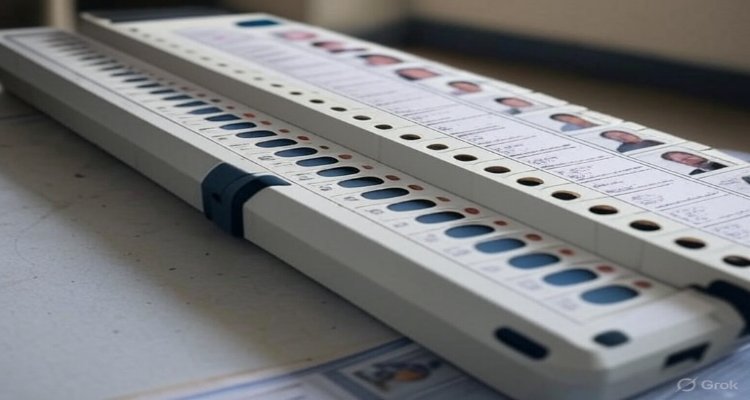EVMs to Feature Color Photographs of Candidates for Greater Clarity
The Election Commission of India upgrades EVM ballot papers with color candidate photos and improved readability, starting from Bihar elections.
Introduction: A New Look at India’s Voting Machines
In a country where over 900 million people are eligible to vote, clarity at the ballot is not just important—it’s essential for democracy. The Election Commission of India (ECI) has announced a significant change to the way candidates are displayed on Electronic Voting Machines (EVMs). Beginning with the upcoming Bihar Assembly elections, voters will see color photographs of candidates on the ballot papers, replacing the black-and-white images used since 2015.
Context & Background: Evolution of EVMs in India
Electronic Voting Machines have been a cornerstone of India’s electoral process since their nationwide adoption in 2004. Designed to eliminate invalid votes and speed up counting, EVMs have evolved over time to include innovations such as the Voter Verifiable Paper Audit Trail (VVPAT), which lets voters confirm their choice.
Until now, the ballot papers pasted on EVMs featured only black-and-white photographs of candidates. While functional, the lack of color sometimes created visibility challenges, especially for older voters or in poorly lit polling booths.
Main Developments: What’s Changing and Why It Matters
The Election Commission’s revised guidelines under Rule 49B of the Conduct of Elections Rules, 1961, focus on improving both clarity and uniformity. Key changes include:
- Color photographs of candidates on ballot papers.
- Candidate photos enlarged, with faces occupying three-fourths of the photo space.
- Bold serial numbers printed in international numerals, with a font size of 30 for easy readability.
- Candidate names and the NOTA (None of the Above) option displayed in the same font style and size, ensuring no visual bias.
According to election officials, these upgrades will make it easier for voters to recognize candidates, particularly in rural areas where literacy levels and visual familiarity with candidates may vary.
How the EVM Works: A Quick Explainer
For many voters, the process of using an EVM is simple, but the technology behind it is worth noting:
- Components – An EVM consists of the Ballot Unit (BU), Control Unit (CU), and the VVPAT.
- Casting a Vote – The presiding officer activates the ballot from the CU. The voter then presses the blue button on the BU corresponding to their candidate.
- Verification – A red LED light confirms the selection, while the VVPAT displays a printed slip with the candidate’s details for seven seconds.
- Audit Trail – The slip is automatically cut and stored in a sealed box inside the VVPAT, ensuring transparency and auditability.
- Power Source – EVMs and VVPATs run on built-in batteries, making them reliable even in remote areas with limited electricity access.
This combination of electronic recording and paper verification has been internationally recognized as a robust system, though debates about security continue in some political circles.
Expert Insight & Public Reaction
Election analysts view the move as a pro-voter reform. Dr. R.K. Verma, a political science professor at Delhi University, notes:
“Color photographs will reduce confusion, particularly in constituencies with multiple candidates sharing similar names or party symbols. It’s a simple but effective step toward improving voter confidence.”
Public sentiment echoes this. Many voters, especially seniors, have welcomed the decision, saying color photos make recognition much easier. Social media conversations also reflect a positive response, framing it as a practical upgrade rather than a political one.
Impact & Implications: What Comes Next?
The first test of the revised ballot design will be the Bihar Assembly elections, after which the system will be rolled out nationwide. For the ECI, the change also strengthens its global reputation for conducting the world’s largest democratic exercise with credibility and efficiency.
For voters, this means:
- Easier recognition of candidates.
- A more accessible and transparent voting process.
- Reduced chances of mistakes in pressing the wrong button.
Politically, while this reform is unlikely to shift electoral outcomes, it could improve trust in the system, especially amid debates over EVM reliability.
Conclusion: A Clearer Choice for India’s Democracy
India’s democracy thrives on participation, and participation depends on clarity. By introducing color photographs and standardizing ballot design, the Election Commission has taken a small but significant step to make voting more transparent, accessible, and voter-friendly.
As the nation gears up for elections, the upgraded EVMs stand as a reminder that even minor reforms can strengthen the world’s largest democracy.
Disclaimer : This article is for informational purposes only and is based on official guidelines issued by the Election Commission of India.











